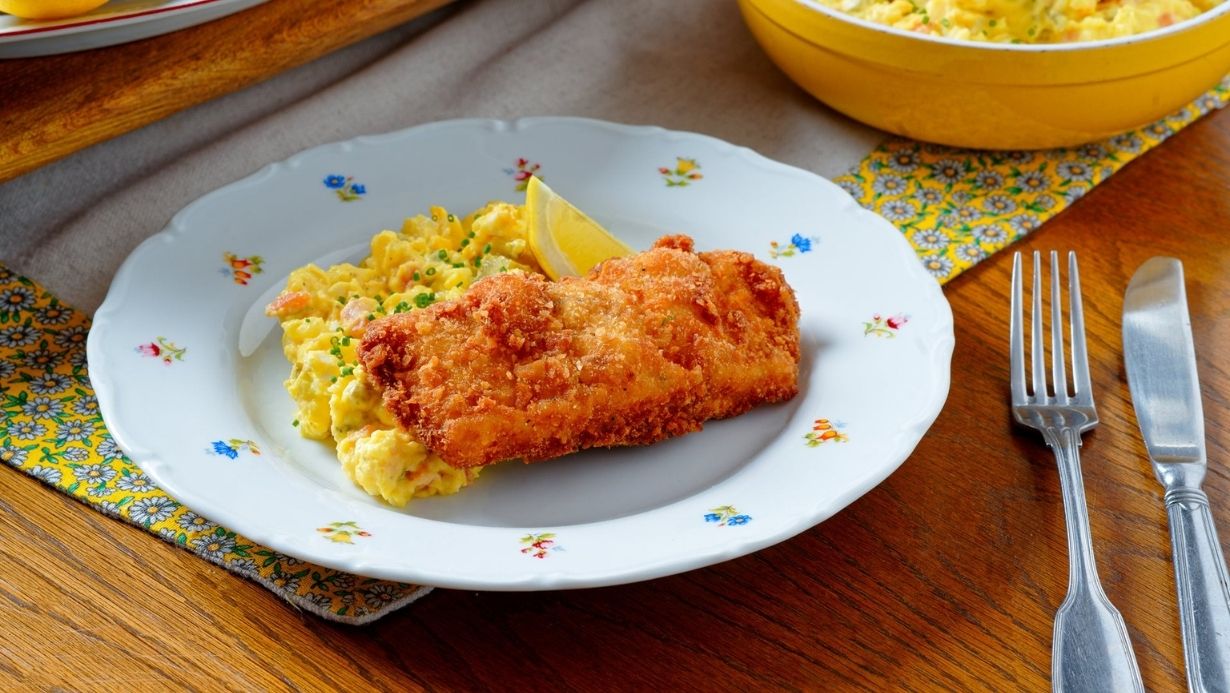For centuries, families throughout much of central Europe have relied on one simple main course for Christmas Eve dinner: the common carp.
But getting from river (or carp farm) to table is not so simple. As the tradition goes, the Christmas carp must first swim in the family bathtub for at least a day or two before being killed, cleaned and prepared.
In what is now the Czech Republic, the first mentions of carp for Christmas began in the 17th century. However the fish farming industry dates to the 12th century.
The historical seat of fish farming in the Czech lands is the Třeboň region where carp were typically kept in monastic ponds for periods of fasting. From there its breeding spread to aristocratic and municipal ponds where whole systems were built for breeding carp.
The development of pond systems continued during the reign of Charles IV. The oldest ponds in the Třeboň date back to the 14th century when carp was already the most commonly farmed fish, making it among the oldest domesticated fish species in the world.
Prior to the 17th century, the golden age of Třeboň carp, eating fish at Christmastime was limited to the affluent and noble classes with most simple folk serving humble dishes like houbová kuba, zelná polévka (cabbage soup) and other, predominantly meatless dishes. Widespread holiday carp consumption likely began in the 19th century.
Frying carp didn’t become popular until the 19th century
The earliest methods for baking the carp were to use white wine or vinegar (na modro – on the blue) or alternatively in a sweet prune sauce with ginger bread (na černo – on the black). Mentions of fried carp with potato salad don’t surface until 1924; potato salad didn’t even become a traditional Christmas Eve side until as late as the 1950s.
In fact, during the First Czechoslovak Republic, carp was a favored dish during the Lenten fast and its consumption at Easter was only slightly lower than at Christmas! The custom of deep-frying carp is thought to have come from the period immediately after the Second World War.
Recipe
Fried carp and potato salad is recommended as fasting meal already in a well-known cookery book Domácí kuchařka by Magdalena Dobromila Rettigová, published for the first time in 1826 (with many later editions, the latest one dating from 2004). However, besides carp and salad, it offers five menus consisting of eight to fourteen courses including crayfish, eel, pike, shell, frog, or snails. And what did her potato salad recipe look like?
Apart from potatoes, onion, egg, vinegar, and oil, used in its modern version as well, it included “various leftovers from any meals”, such as cold roast veal, ham, smoked tongue, poultry, salted herring, anchovy, bean or cauliflower and, last but not least, first-class olive oil. But don’t worry, the ingredients for our recipe are not so hard to be found…
Procedure
Preferably the day before, boil potatoes in skin for about 15‑20 minutes, depending on their size, and check with a knife whether they are soft. Let them cool down, peel and cut into cubes about 1 × 1 cm.
Peel carrot and celery root and cook them in salted water 10‑15 minutes until tender but not overcooked. Take them out of water, let them cool down and cut into small pieces. Prepare hard-boiled eggs, peel and cut in pieces. Defrost green peas (or rinse the sterilized ones and drain).
Cut ham and pickles into small cubes (leaving the brine for seasoning). Mix all ingredients carefully in a bowl, add mayonnaise and some pickle brine with mixed salt and pepper.
Salt the carp fillets and dip them in flour, then in egg and milk mixture and finally in breadcrumbs. Fry on all sides in hot oil until golden brown. Add lemon to each serving.
Ingredients
4 carp fillets a 150 g
all-purpose flour
2 eggs
2 tablespoons milk
bread crumbs
fat for frying
lemon
salt
Ingredients for potato salad:
1 kg potatoes for salad (A-type)
4 carrots
1/4 kg celery root
4 eggs
jar of sterilized green peas or 200 g frozen peas
200 g ham
150 g pickles (gherkins)
150–200 g mayonnaise
salt and pepper
-
NEWSLETTER
Subscribe for our daily news




